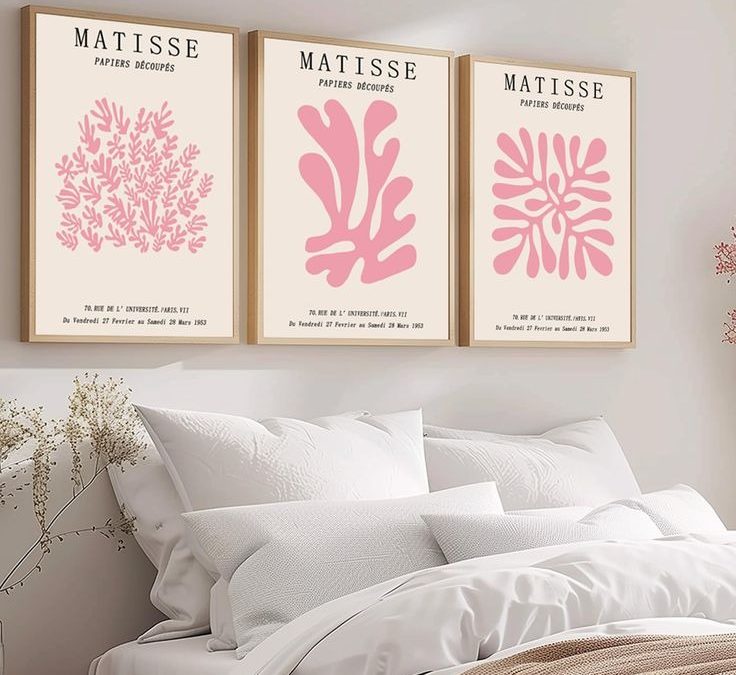Девушка на час: зачем и как?
May 14, 2025
The Supreme Canvas Art Compendium: An Exhaustive Exposition
May 15, 2025Prologue
Canvas art, in its myriad forms, occupies a distinguished place at the intersection of tradition, innovation, and visual storytelling. From the textured brushstrokes of old masters to contemporary digital print techniques, canvas provides a versatile medium for artists and connoisseurs alike. In this comprehensive exposition, we journey through the history, materials, techniques, cultural impact, sustainability, care, market dynamics, and future horizons of canvas art. Each section unfolds with depth to form a richly woven narrative that honors the enduring significance of this medium.
Historical Foundations and Evolution
Origins in Antiquity Long before stretched cotton became the norm, artists painted directly onto walls, wooden panels, and cloth fragments. Early civilizations in Egypt and Greece experimented with linen as a portable surface, applying natural pigments mixed with binders to record myths and rituals. These precursors laid groundwork for the later adoption of canvas as a preferred substrate.
Renaissance Refinement By the fifteenth century, Italian masters championed canvas over wood panels, valuing its lighter weight and flexibility for large-scale commissions. Venice, with its humid climate, accelerated this shift; canvas resisted warping where wood would swell. Artists like Titian and Veronese exploited the texture, building luminous layers of glazes to achieve depth and radiance in their compositions.
Baroque to Impressionist Transitions The Baroque era saw canvas support dramatic chiaroscuro and dynamic movement, while the nineteenth century’s Impressionists embraced its responsiveness to loose, rapid brushwork. Monet’s series of water lilies and sky studies relied on canvas’s ability to hold impasto and broken color techniques, conveying ephemeral light and atmosphere.
Materials and Manufacturing Mastery
Canvas Substrates: Cotton, Linen, and Beyond Traditional linen canvas, woven from flax fibers, offers a tight weave and exceptional longevity, prized for archival quality. Cotton duck emerged as a cost-effective alternative in the eighteenth century, its looser weave suited to both studio practice and outdoor easels. Today, synthetic blends incorporating polyester add dimensional stability, reducing susceptibility to environmental fluctuations.
Sizing, Priming, and Surface Preparation Raw canvas requires sizing—application of animal glue or acrylic medium—to seal fiber porosity and prevent paint absorption. Multiple coats of gesso primer follow, creating a smooth, toothy surface that balances adhesion and slip. Specialized grounds, like textured acrylic pastes or absorbent oil primers, further customize surface response for diverse painting styles.
Production Techniques: Stretcher Bars and Framing Crafting a taut painting surface involves constructing wooden stretcher bars joined by mortise-and-tenon or keyed corners. Artists may opt for deep-profile bars to showcase edge treatments or thin bars for easier shipping. Canvas must be tensioned evenly to prevent sagging; conservation-grade keys allow future re-tensioning. Finished canvases integrate seamlessly with traditional frames or modern floating systems.
Artistic Techniques and Styles
Classical Oil Painting Methods Oil painters deploy alla prima strategies for direct, wet-on-wet layering, or build complex indirect works through sequential underpainting, mid-tones, and glazes. The slow drying time of oil paint enables meticulous blending but demands controlled ventilation and medium ratios to avoid cracking.
Textural and Experimental Approaches Acrylic artists leverage rapid-drying versatile mediums—from molding paste to pouring mediums—to produce thick impasto, fluid abstractions, and mixed-media collages. Techniques like acrylic pouring, sgraffito, and collage integrate nontraditional materials—sand, paper, fabric—pushing canvas into sculptural realms.
Digital and Hybrid Modalities Fine art printers translate digital files into high-fidelity canvas reproductions using pigment-based inks. UV-cured and solvent-based systems ensure lightfastness. Some hybrid artists incorporate hand-finishing—overpainting printed underlayers—to marry precision with tactile authenticity.
Cultural Resonance and Expression
Iconic Works and Movements Canvas has carried seminal works—from the spiritual mysticism of Rubens to the radical expressionism of de Kooning. Abstract Expressionists turned canvas into an arena for action painting, their drips and splashes conveying psychological immediacy. Pop artists repurposed commercial imagery onto canvas, subverting high art conventions.
Public Art and Installation Large-scale canvas murals and fabric installations transform architectural spaces. Artists like Christo and Jeanne-Claude envelop buildings and landscapes in billowing textiles, challenging perceptions of form and context. Interactive canvas installations invite community participation, democratizing art experiences.
Customization and Commercial Applications Canvas prints adorn homes, offices, and retail environments. Customized photo canvases capture personal narratives—family portraits or travel vistas—while graphic designers supply branded imagery for corporate lobbies. The medium bridges fine art and mass-market décor.
Sustainability and Ethical Considerations
Environmental Footprint of Canvas Production Traditional linen cultivation can be resource-intensive, relying on water and land. Chemical stabilizers and primers may emit volatile organic compounds (VOCs). Transportation of bulky canvas raises carbon emissions.
Eco-Friendly Alternatives and Practices Organic cotton and sustainably harvested flax reduce agrochemical use. Water-based, low-VOC primers and recycled wood stretcher bars minimize emissions. Some studios adopt digital proofs to reduce physical samples and waste.
Circular Models: Conservation, Restoration, and Recycling Conservation science extends the life of historical canvases through gentle cleaning, lining, and repair techniques. End-of-life canvases may be upcycled into mixed-media art or repurposed as banners and upholstery. Disposal guidelines encourage separation of wood, fabric, and metal for recycling streams.
Care, Preservation, and Display Guidelines
Condition Monitoring and Preventive Care Maintaining stable humidity and temperature prevents canvas deformation and mold growth. UV-filtering glass or acrylic glazing protects pigment integrity. Periodic dusting with soft brushes averts particulate buildup.
Handling, Storage, and Transportation Rollable artworks require acid-free interleaving paper and gentle tension control. Framed pieces need protective corner guards and climate-controlled crates during transit. Vertical storage systems preserve space and prevent warping.
Restoration and Conservation Interventions Qualified conservators address canvas tears, paint flaking, and discoloration. Techniques include patching, inpainting, and consolidating loose paint layers using reversible adhesives. Documentation ensures future caretakers understand the object’s treatment history.
Market Dynamics and Industry Ecosystem
Fine Art Galleries and Auction Houses Primary market transactions occur through vetted galleries and exhibitions. Secondary market valuations reflect provenance, condition, and historical importance. Auction houses publish catalogs and host live events that drive competitive bidding.
Print-on-Demand Services and E-Commerce Platforms Online marketplaces democratize access, enabling artists to sell limited-edition and open-edition canvas prints worldwide. Drop-shipping models handle production and fulfillment, allowing creators to focus on design.
Art Fairs, Pop-Ups, and Collaborative Ventures Regional art fairs showcase emerging talent, fostering direct artist-collector connections. Collaborative shows with designers and brands amplify cross-disciplinary engagement, often culminating in exclusive canvas editions.
Future Horizons and Technological Frontiers
Smart Canvas Technologies Integration of conductive inks and fiber optics into canvas surfaces could enable illuminated paintings and kinetic elements. Embedded sensors might detect environmental changes or viewer proximity.
Augmented and Virtual Reality Experiences AR overlays can animate static canvas works when viewed through mobile devices. Virtual galleries replicate museum experiences remotely, preserving scale and texture in digital realms.
Advanced Materials: Bio-based and Self-Healing Fabrics Research into biofabricated spider silk and mycelium-derived textiles hints at ultra-strong, lightweight canvas alternatives. Self-healing polymers mixed into priming layers promise automatic repair of small abrasions.
Concluding Reflections
Canvas art’s journey across centuries attests to its adaptability and enduring allure. From foundational linen grounds to digital hybrids, the medium has expanded the limits of visual expression. As environmental imperatives converge with technological breakthroughs, canvas art stands poised for reinvention. This treatise honors both the storied past and boundless future of an art form that continues to captivate creators and audiences alike.


